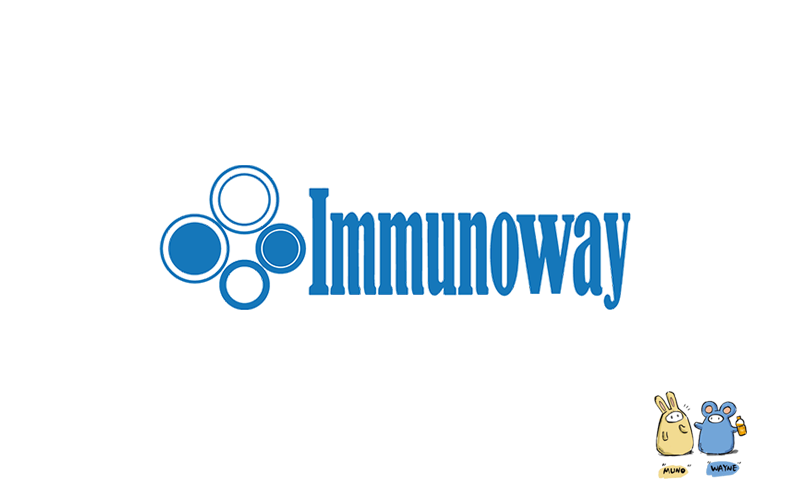
Catalog: YN1984
Size
Price
Status
Qty.
200μL
$450.00
In stock
0
100μL
$280.00
In stock
0
40μL
$150.00
In stock
0
Add to cart


Collected


Collect
Main Information
Target
POLH
Host Species
Rabbit
Reactivity
Human, Mouse
Applications
WB, ELISA
MW
78kD (Observed)
Conjugate/Modification
Unmodified
Detailed Information
Recommended Dilution Ratio
WB 1:500-2000; ELISA 1:5000-20000
Formulation
Liquid in PBS containing 50% glycerol, and 0.02% sodium azide.
Specificity
POLH Polyclonal Antibody detects endogenous levels of protein.
Purification
The antibody was affinity-purified from rabbit antiserum by affinity-chromatography using epitope-specific immunogen.
Storage
-15°C to -25°C/1 year(Do not lower than -25°C)
Concentration
1 mg/ml
MW(Observed)
78kD
Modification
Unmodified
Clonality
Polyclonal
Isotype
IgG
Related Products
Antigen&Target Information
Immunogen:
Synthesized peptide derived from part region of human protein
show all
Specificity:
POLH Polyclonal Antibody detects endogenous levels of protein.
show all
Gene Name:
POLH RAD30 RAD30A XPV
show all
Protein Name:
DNA polymerase eta (RAD30 homolog A) (Xeroderma pigmentosum variant type protein)
show all
Background:
This gene encodes a member of the Y family of specialized DNA polymerases. It copies undamaged DNA with a lower fidelity than other DNA-directed polymerases. However, it accurately replicates UV-damaged DNA; when thymine dimers are present, this polymerase inserts the complementary nucleotides in the newly synthesized DNA, thereby bypassing the lesion and suppressing the mutagenic effect of UV-induced DNA damage. This polymerase is thought to be involved in hypermutation during immunoglobulin class switch recombination. Mutations in this gene result in XPV, a variant type of xeroderma pigmentosum. Several transcript variants encoding different isoforms have been found for this gene. [provided by RefSeq, May 2014],
show all
Function:
Catalytic activity:Deoxynucleoside triphosphate + DNA(n) = diphosphate + DNA(n+1).,cofactor:Divalent metal cations. Prefers magnesium, but can also use manganese.,Disease:Defects in POLH are the cause of xeroderma pigmentosum variant type (XPV) [MIM:278750]; also designated as XP-V. Xeroderma pigmentosum (XP) is an autosomal recessive disease due to deficient nucleotide excision repair. It is characterized by hypersensitivity of the skin to sunlight, followed by high incidence of skin cancer and frequent neurologic abnormalities. XPV shows normal nucleotide excision repair, but an exaggerated delay in recovery of replicative DNA synthesis. Most XPV patients do not develop clinical symptoms and skin neoplasias until a later age. Clinical manifestations are limited to photo-induced deterioration of the skin and eyes.,Domain:The catalytic core consists of fingers, palm and thumb subdomains, but the fingers and thumb subdomains are much smaller than in high-fidelity polymerases; residues from five sequence motifs of the Y-family cluster around an active site cleft that can accommodate DNA and nucleotide substrates with relaxed geometric constraints, with consequently higher rates of misincorporation and low processivity.,Function:DNA polymerase specifically involved in DNA repair. Plays an important role in translesion synthesis, where the normal high fidelity DNA polymerases cannot proceed and DNA synthesis stalls. Plays an important role in the repair of UV-induced pyrimidine dimers. Depending on the context, it inserts the correct base, but causes frequent base transitions and transversions. May play a role in hypermutation at immunoglobulin genes. Forms a Schiff base with 5'-deoxyribose phosphate at abasic sites, but does not have lyase activity. Targets POLI to replication foci.,similarity:Belongs to the DNA polymerase type-Y family.,similarity:Contains 1 umuC domain.,subcellular location:Accumulates at replication forks after DNA damage.,subunit:Binds REV1L (By similarity). Binds monoubiquitinated PCNA, but not unmodified PCNA. Binds POLI.,
show all
Cellular Localization:
Nucleus . Binding to ubiquitinated PCNA mediates colocalization to replication foci during DNA replication and persists at sites of stalled replication forks following UV irradiation (PubMed:12606586, PubMed:16357261, PubMed:24553286). After UV irradiation, recruited to DNA damage sites within 1 hour, to a maximum of about 80%; this recruitment may not be not restricted to cells active in DNA replication (PubMed:22801543). Colocalizes with TRAIP to nuclear foci (PubMed:24553286). .
show all
Tissue Expression:
Cervix carcinoma,Epithelium,Skin,
show all
Research Areas:
>>Platinum drug resistance ;
>>Fanconi anemia pathway
>>Fanconi anemia pathway
show all
Reference Citation({{totalcount}})
Catalog: YN1984
Size
Price
Status
Qty.
200μL
$450.00
In stock
0
100μL
$280.00
In stock
0
40μL
$150.00
In stock
0
Add to cart


Collected


Collect
Recently Viewed Products
Clear allPRODUCTS
CUSTOMIZED
ABOUT US
Toggle night Mode
{{pinfoXq.title || ''}}
Catalog: {{pinfoXq.catalog || ''}}
Filter:
All
{{item.name}}
{{pinfo.title}}
-{{pinfo.catalog}}
Main Information
Target
{{pinfo.target}}
Reactivity
{{pinfo.react}}
Applications
{{pinfo.applicat}}
Conjugate/Modification
{{pinfo.coupling}}/{{pinfo.modific}}
MW (kDa)
{{pinfo.mwcalc}}
Host Species
{{pinfo.hostspec}}
Isotype
{{pinfo.isotype}}
Product {{index}}/{{pcount}}
Prev
Next
{{pvTitle}}
Scroll wheel zooms the picture
{{pvDescr}}



















